Accessible Travel Guide to Eastern Oregon
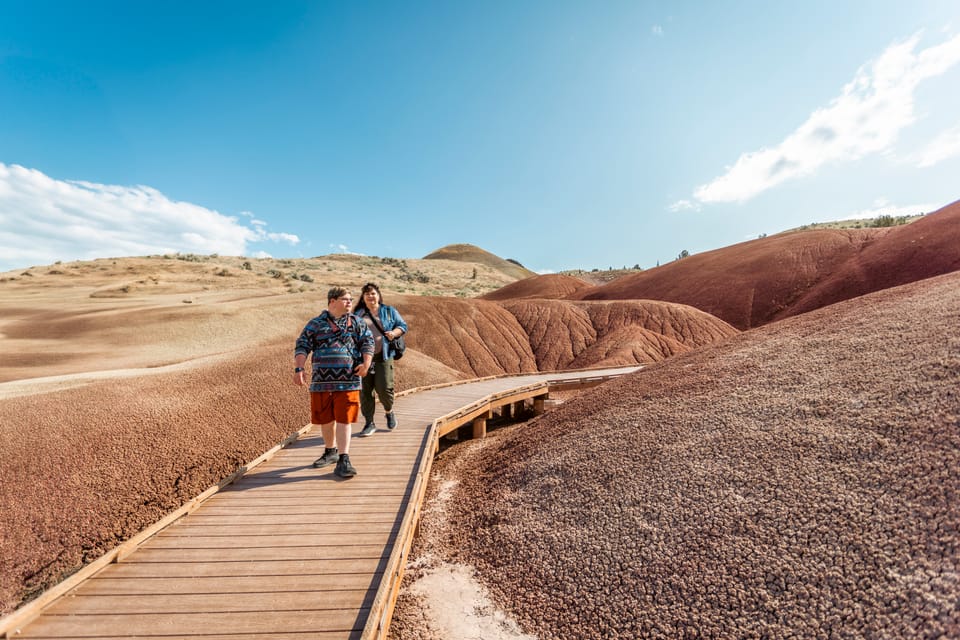
Eastern Oregon feels like a different world compared to the state’s well-known coast and city life. Out here, it’s all wide-open skies, high desert hills, and small towns where history and culture run deep. It’s quieter, slower, and full of places you won’t see anywhere else in Oregon.
For travelers with disabilities, it’s also more doable than you might think. Many of the region’s top attractions — from cultural centers to riverfront paths and historic railroads — are wheelchair accessible. You’ll find verified hotels in every major town, plus dining spots that mix local charm with hearty food.
This guide follows the same route we took on our Eastern Oregon trip: starting in Pendleton, weaving through the Painted Hills and John Day, and ending in Baker City. Along the way, you’ll find ideas for where to stay, what to eat, and how to make the most of your time out east.
Travel Oregon has partnered with Wheel the World to map hotels, restaurants, attractions, and more across the state. That means many places you see in this guide (and in our other Oregon guides) have verified accessibility details you can count on. Why? So people with disabilities can find hotels and experiences that actually work for them and their needs — because accessibility is personal.
What's Ahead?
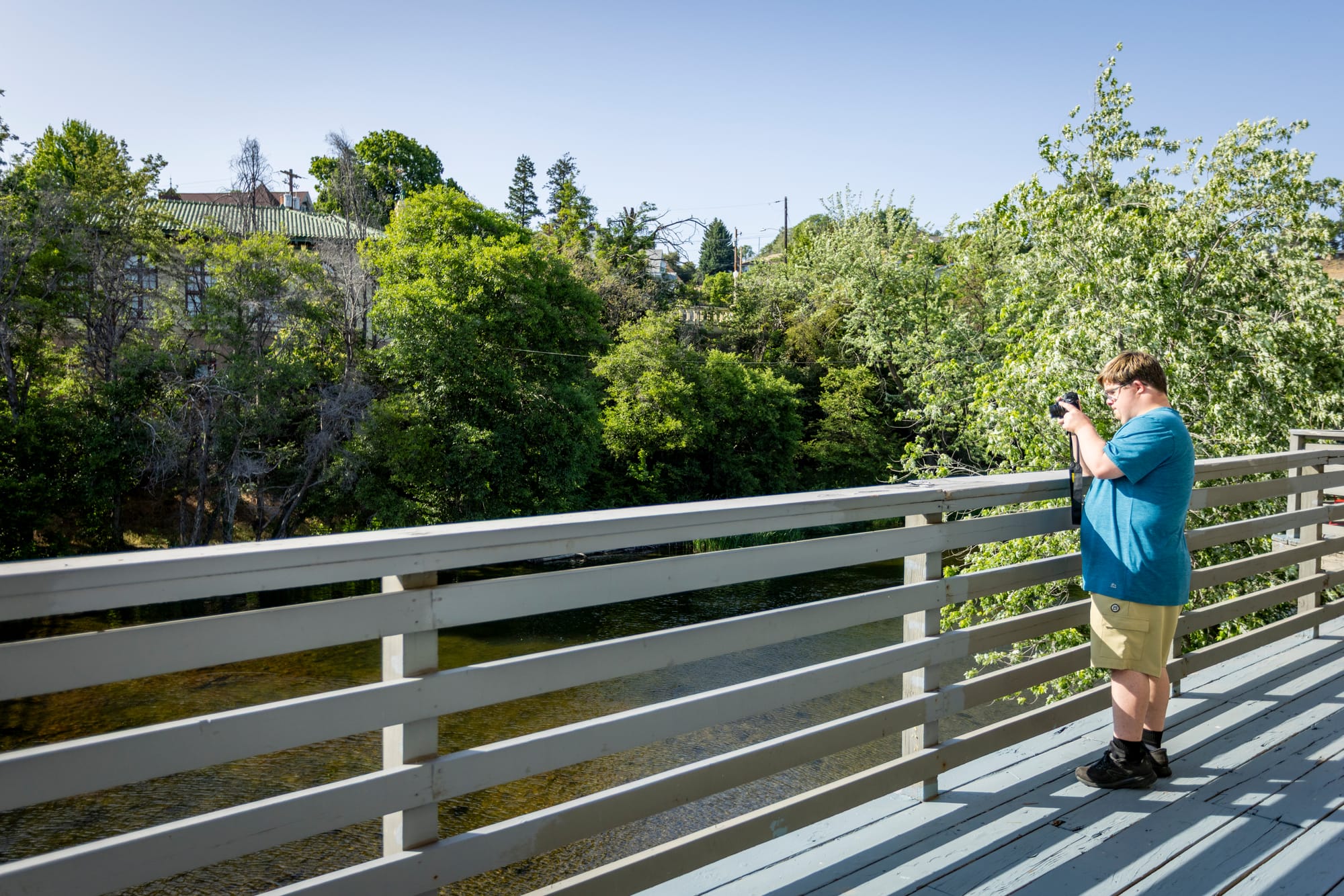
Pendleton
Pendleton is the natural starting point for an Eastern Oregon adventure. It’s best known for the annual Pendleton Round-Up rodeo, but even outside of rodeo season, this town has plenty of reasons to linger.
Tamástslikt Cultural Institute
If you want to understand Eastern Oregon, start here. Tamástslikt Cultural Institute tells the story of the Cayuse, Umatilla, and Walla Walla tribes. Exhibits cover everything from traditional homelands to how Native culture continues today. It’s fully accessible, and the on-site café makes it easy to grab lunch before heading back out.
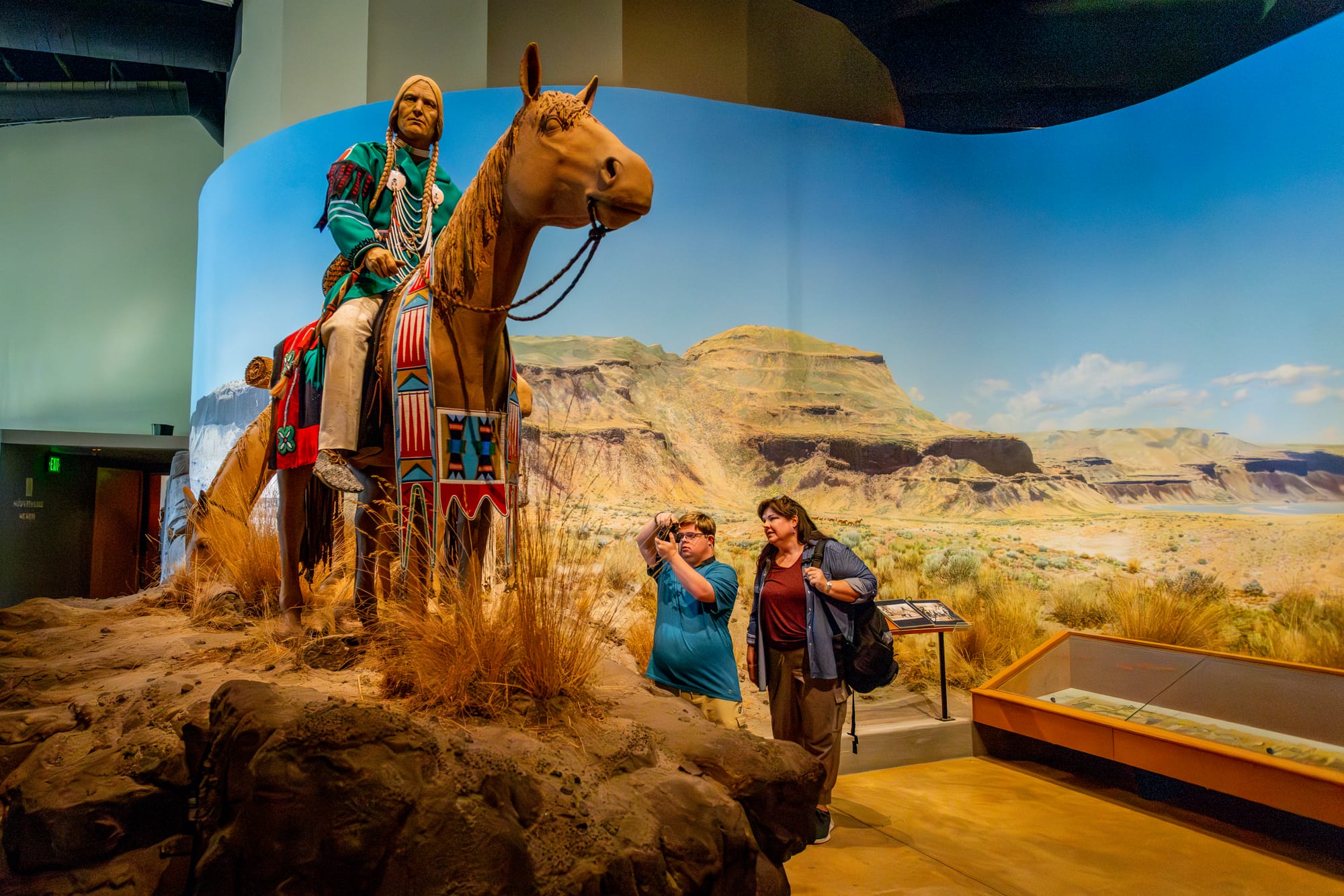
Pendleton Woolen Mills
Next, head to the iconic Pendleton Woolen Mills, where you take a mill tour free of charge, offered Monday through Friday at 11 a.m. and 3 p.m. The tour walks you past clattering looms and spindles, where wool is spun and woven into the bold patterns Pendleton is famous for. It’s step-free and has wide walkways, so it works for wheelchair users. Afterward, pop into the store attached to the mill — part museum, part shop, and the perfect place to grab a blanket or shirt that will actually mean something because you’ve seen where it came from.
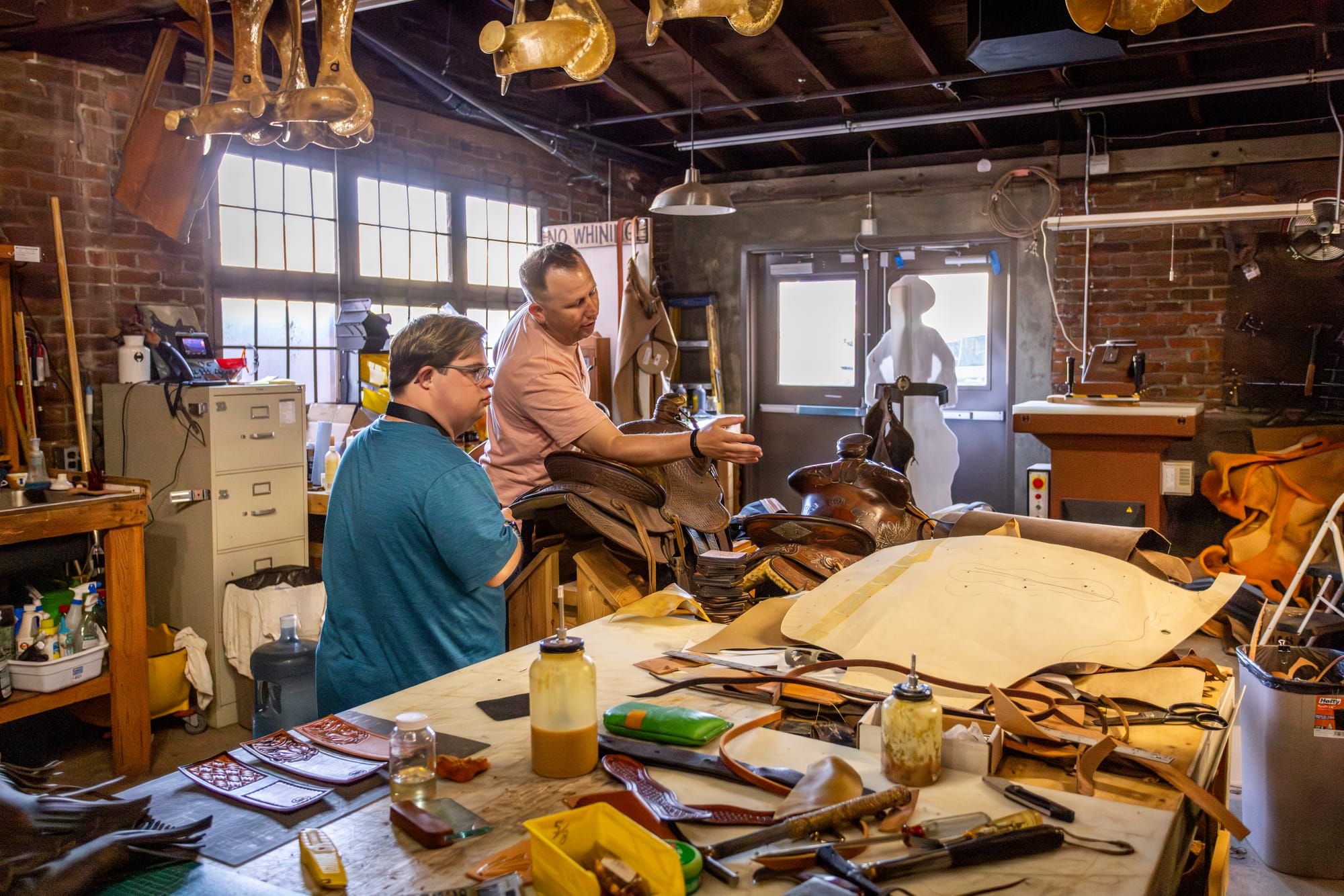
Pendleton Riverwalk
Don’t miss the Pendleton Riverwalk. This paved trail runs about three miles along the Umatilla River, tying together parks, neighborhoods, and downtown. It’s flat and rollable, so it works well for wheelchair users or anyone looking for a laid-back outing.
The best stretch starts near Roy Raley Park and winds past the Round-Up Grounds — you’ll see murals under the bridges, benches to pause at, and a few spots where locals fish from the riverbank. You don’t need to do the whole trail; even a short roll gives you a sense of the town.
Downtown Pendleton
Don’t skip downtown while you’re here. The Round-Up Grounds are at the heart of town, and even when the rodeo isn’t happening you’ll find statues, murals, and reminders of Pendleton’s cowboy roots. Hamley’s Western Store is worth a stop too — part old-school saddle shop, part showcase of Pendleton history. As you roll through downtown, keep an eye out for murals tucked along the side streets and small galleries featuring local artists. It’s an easy way to get a feel for Pendleton’s mix of western tradition and creative flair.
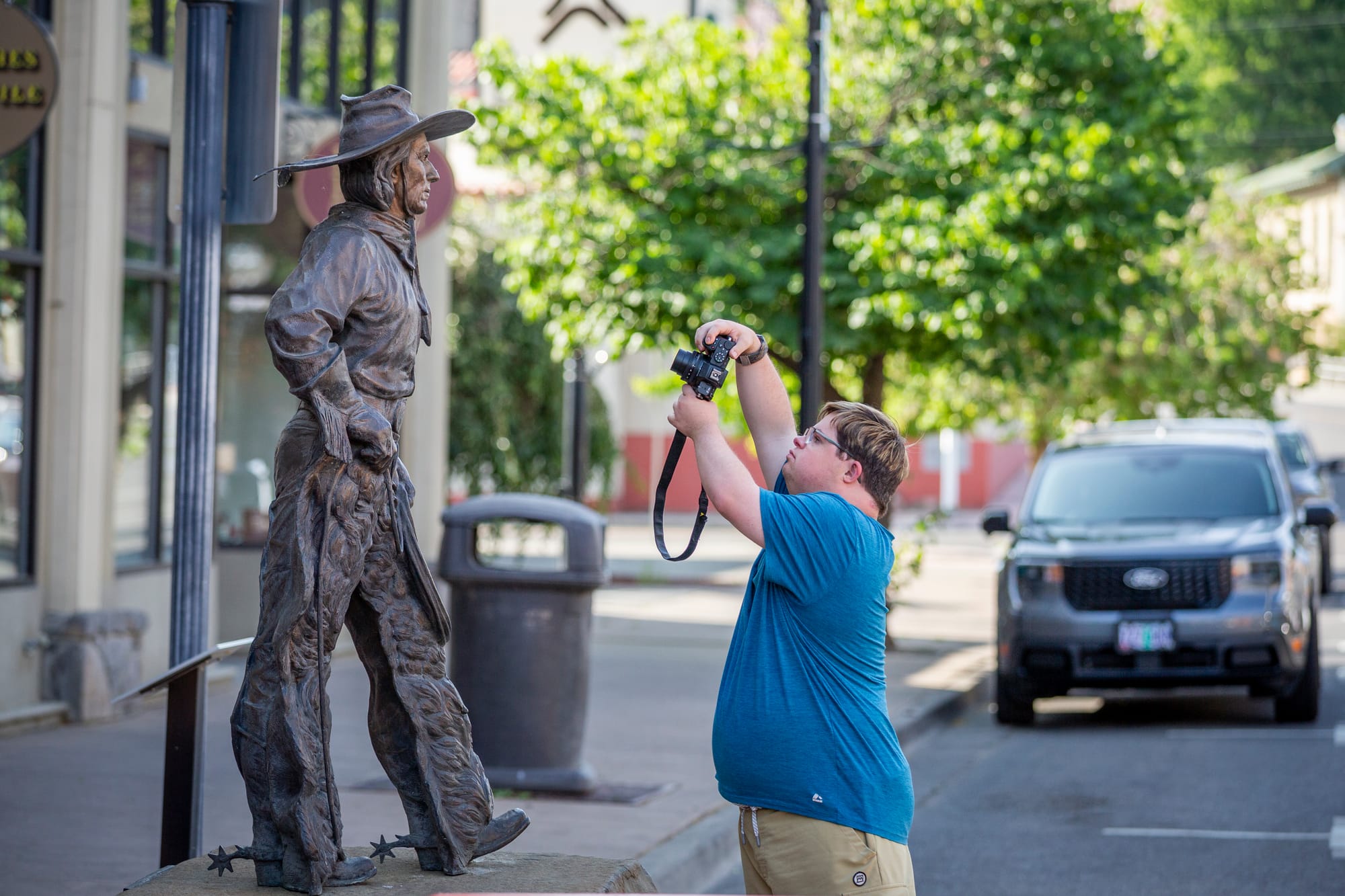
A few more easy adds
If you have extra time in town, there are a couple of other stops worth adding. Heritage Station Museum dives into local history with exhibits on the Oregon Trail, railroad life, and Pendleton’s frontier days. The galleries are accessible and easy to move through, so you can take your time with everything from old wagons to Western artifacts.
Traveling with kids? The Children’s Museum of Eastern Oregon is a fun break. It’s full of hands-on play spaces — think interactive exhibits, creative stations, and spots to burn some energy — all designed with accessibility in mind so little ones of all abilities can join in.
Where to Eat in Pendleton
Pendleton has a surprisingly strong dining scene for a small town. If you’re hungry for steak or Northwest comfort food, Hamley Steakhouse & Saloon is a classic stop, right in the heart of downtown. For a lighter bite, Great Pacific serves pizza, sandwiches, and soups in a welcoming space that’s easy to roll into.
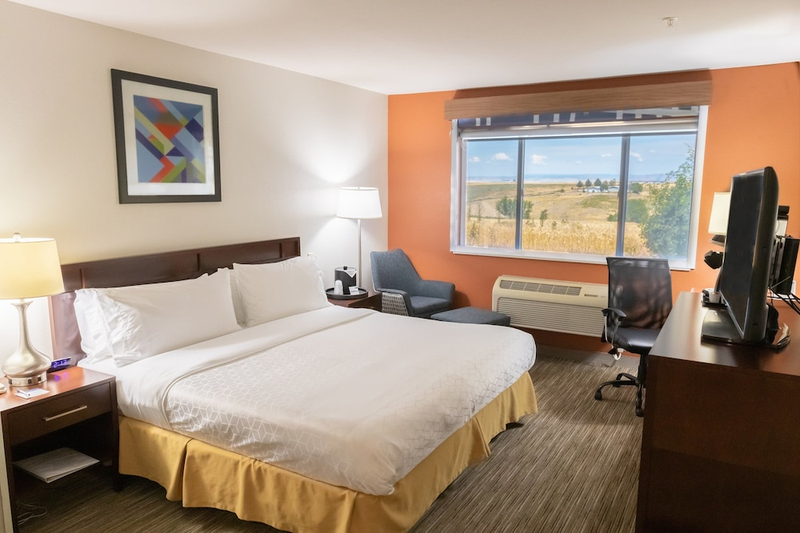
Where to Stay in Pendleton
Pendleton has a few verified hotels, each with a slightly different feel. Oxford Suites a favorite if you want comfort without breaking the bank. It’s close to downtown and includes breakfast, plus spacious accessible rooms.
If you’d rather stay right by the airport, Radisson Hotel Pendleton Airport is a modern choice with wide corridors, elevators, and roll-in showers. For something in between, Holiday Inn Express is a reliable pick with step-free access and a pool with a lift.
Driving to the Next Stop
The most straightforward route from Pendleton to the Painted Hills is to go west on I-84 to Arlington, then head south on Highway 19 through Condon and Fossil before reaching Mitchell. The drive takes about 3.5 to 4 hours, with scenery that shifts from wide-open wheat fields to rimrock canyons. Small towns along the way make good rest stops, and this route keeps you on the easiest and most direct path to the Painted Cove Trail and the other Painted Hills viewpoints.
Painted Hills & John Day Fossil Beds
From Pendleton, head southwest toward the Painted Hills, one of Oregon’s most photographed landscapes. Bands of red, gold, and black stripe the rolling hills, especially dramatic in late afternoon light.
Trails at Painted Hills
The Painted Cove Trail is a short boardwalk loop that gets you right up close to the colorful clay hills. The Overlook Trail offers a wide, packed-gravel path to sweeping views, and Leaf Hill Trail gives you a look at fossil beds where scientists still work today.
The terrain here varies, but at least one or two of these trails are manageable for wheelchair users, and the viewpoints are accessible. Plan a couple of hours to really enjoy it, and always stay on designated trails due to the fragile ecosystems.
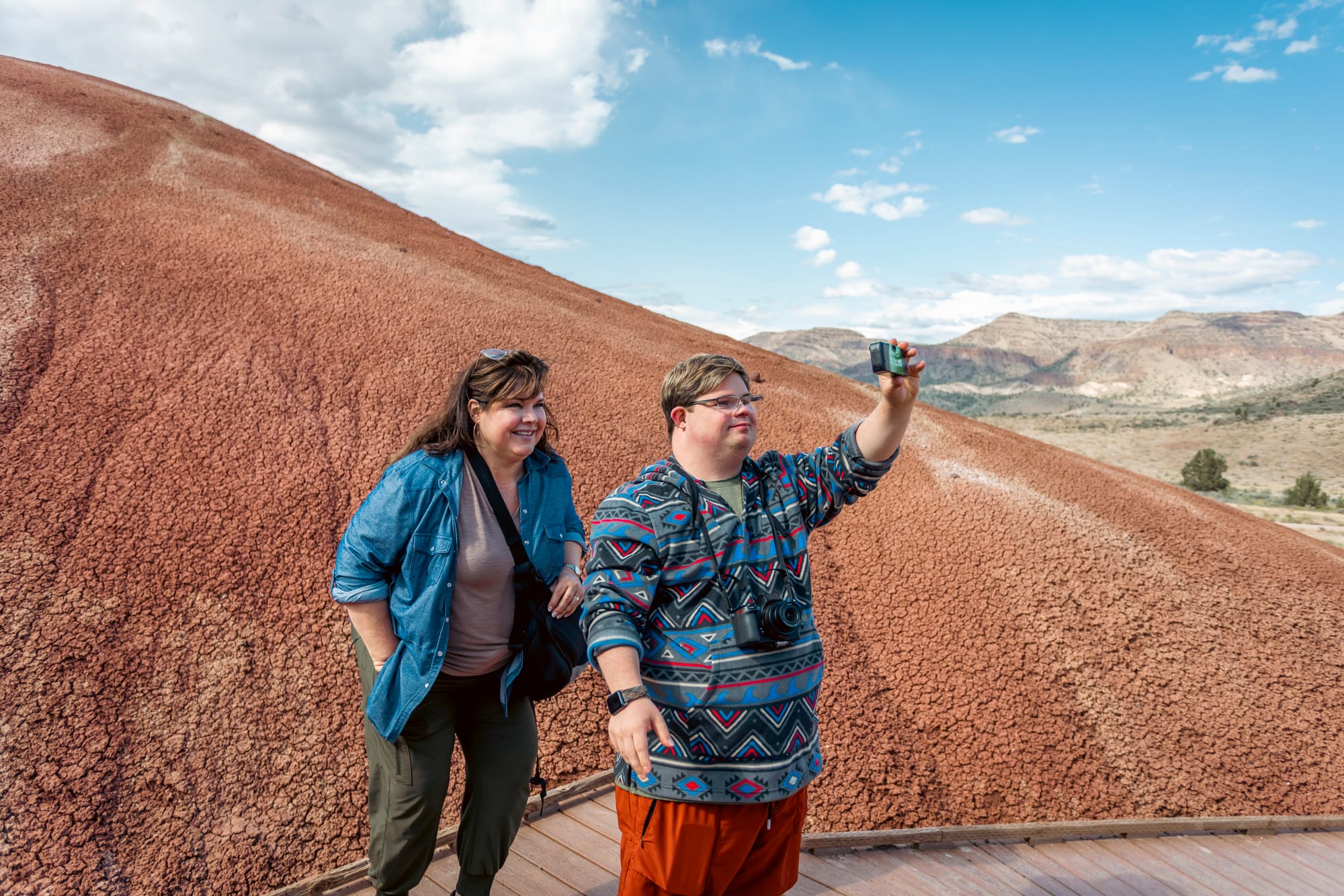
Thomas Condon Visitor Center
If the Painted Hills spark your curiosity, make your way to the Thomas Condon Visitor Center in John Day. This is the hub of the John Day Fossil Beds National Monument, and it’s where the science behind those colorful hills really comes to life.
Inside, you’ll find fossils on display that date back millions of years — saber-toothed cats, ancient rhinos, and early horses that once roamed this very ground. The exhibits are designed with accessibility in mind: wide, step-free pathways, plenty of space to roll through, and interactive displays that make the geology and paleontology easy to take in.
Don’t miss the short films in the theater, which has wheelchair seating and assistive listening devices. If you’re lucky, you might even catch scientists at work in the visible lab, carefully preparing fossils for research. It’s one of those rare places where you leave with a whole new appreciation for the ground you’ve been traveling over.
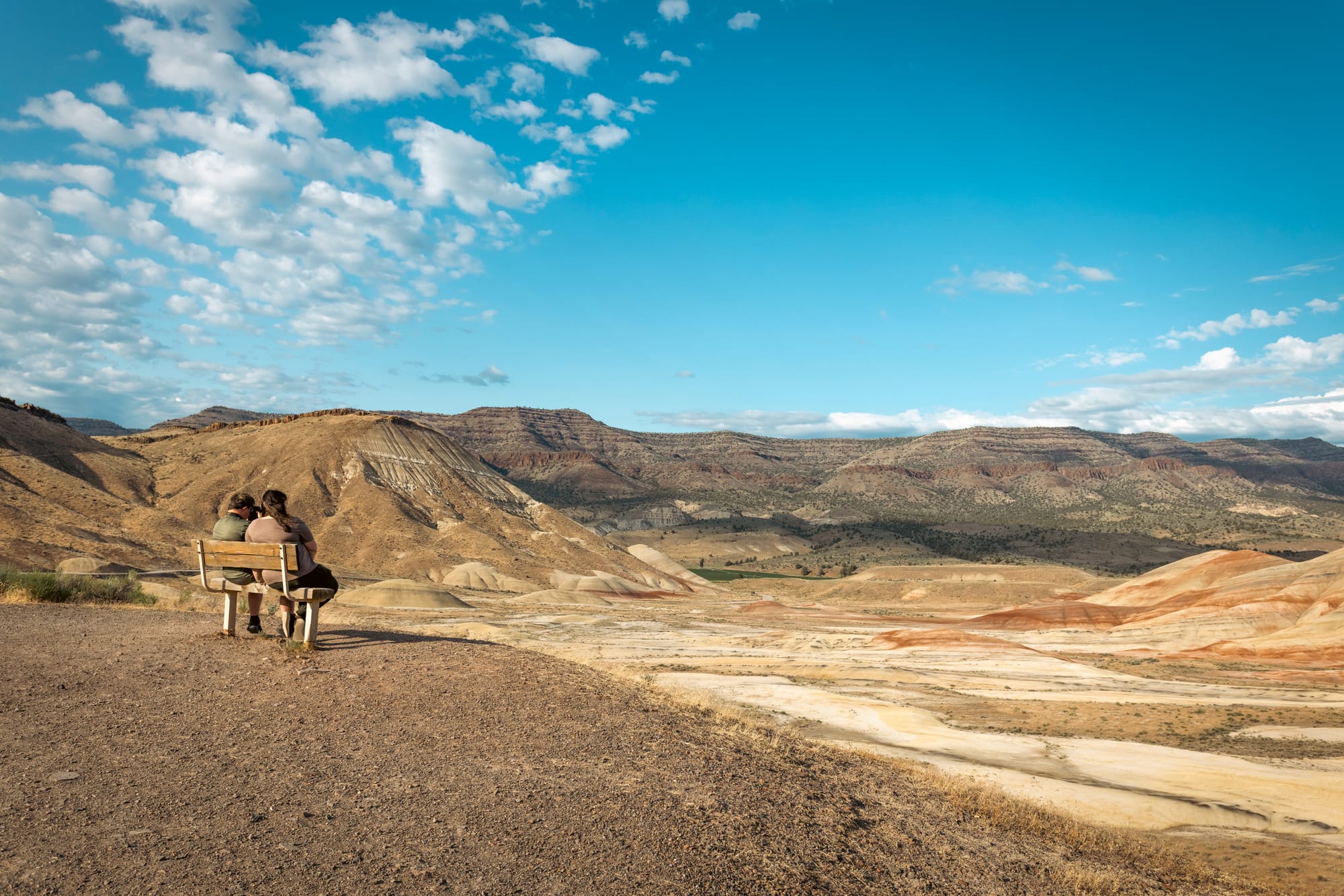
Where to Eat
For lunch near the Painted Hills, you have a couple of solid options. Tiger Town Brewing in Mitchell is a good stop. The menu is straightforward — burgers, sandwiches, and salads — with a few rotating beers brewed on-site.
In John Day, 1188 Brewing serves the kind of hearty food you’ll want after a day outside. Expect classics like fish and chips, tacos, and burgers, alongside a lineup of local beers.
Driving to Baker City
From John Day, it’s a long but beautiful stretch east toward Baker City. The highway follows river valleys and climbs through forested ridges, with wide-open skies the whole way. Picture Gorge is one of the most striking pull-offs — towering cliffs of red and black basalt that frame the road like a natural gate. Prairie City is another good stop to stretch your legs, with mountain views and a few local cafés. This is the kind of drive where you’ll want your camera handy.
Baker City
Keep heading east and you’ll land in Baker City, a town that wears its history on its sleeve. Downtown is lined with brick buildings, vintage signs, and old hotels that feel frozen in time.
Sumpter Valley Railroad
About 30 miles west of Baker City based in the town of Sumpter, the Sumpter Valley Railroad is like pressing pause on modern travel. The narrow-gauge steam engine pulls you slowly through pine country, the smell of wood smoke hanging in the air as the whistle echoes across the valley. The round-trip ride between McEwen and Sumpter lasts about two hours, with a short stop in Sumpter where you can check out the historic dredge or grab a snack. Cars are roll-on accessible, so wheelchair users can board without needing to transfer. It’s a chance to experience the region’s mining history at the same pace people once traveled — unhurried, steady, and scenic.
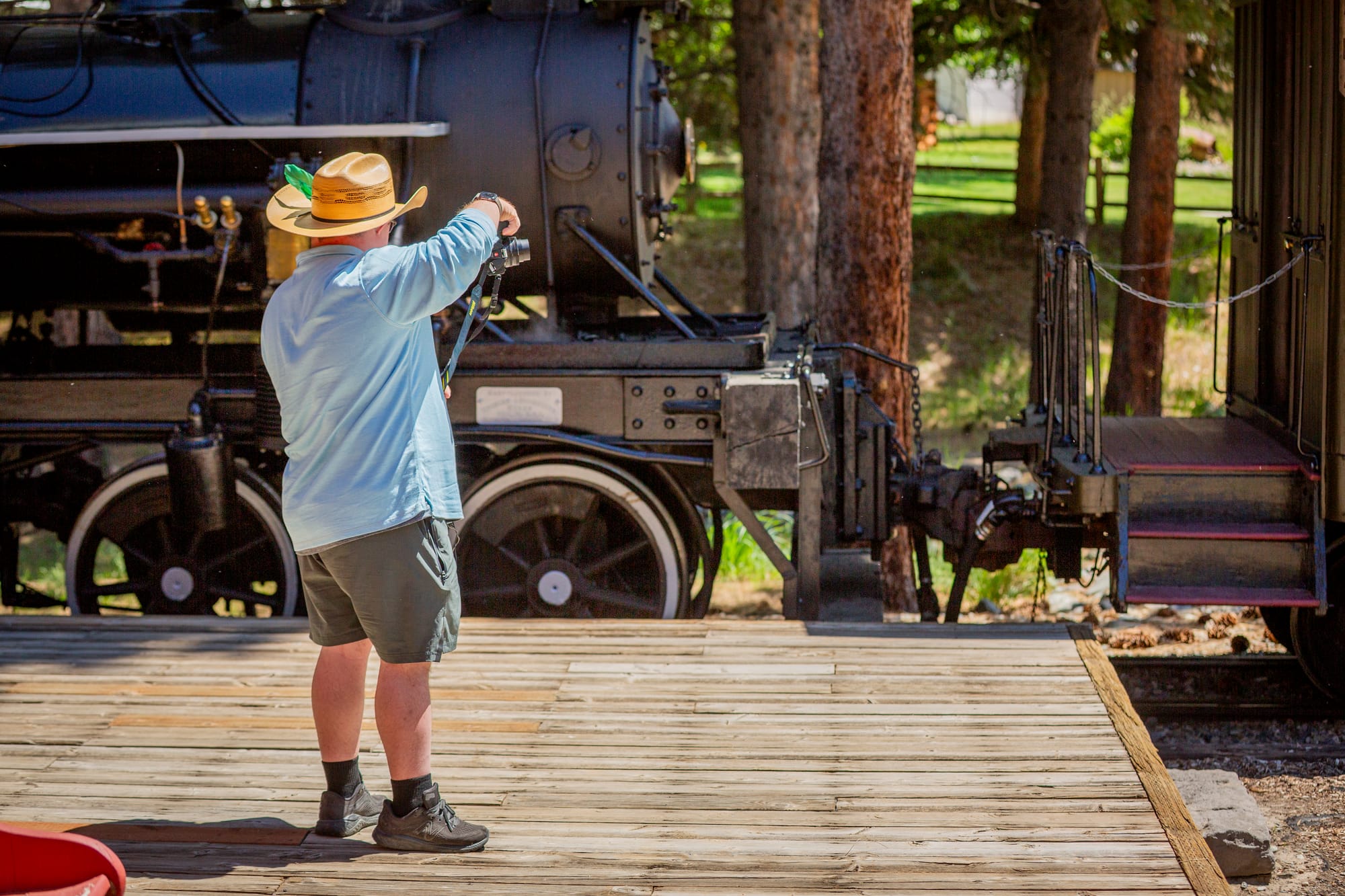
Museums and Parks
For a deeper dive, the Baker Heritage Museum covers everything from local geology to Oregon Trail life, all with accessible galleries. If you’d rather be outside, Geiser-Pollman Park offers paved paths, shade trees, and space to relax.
A few miles outside Baker City, the Oregon Trail Interpretive Center gives you context for everything you’ve been seeing. Inside, ramps and elevators make the galleries easy to navigate, where exhibits dive into the lives of emigrants who crossed the plains. Step outside and you can still spot preserved wagon ruts in the hillside, a reminder of just how many people passed through here on their way west. Between the indoor exhibits and the outdoor trails, you get a real sense of scale — both the challenge of the journey and the determination it took to make it.
Where to Eat in Baker City
Food here matches the town’s mix of old and new. The Cabyn is a stylish cocktail bar and restaurant with modern flavors in a historic setting. If you’re after something more casual, Barley Brown’s Brew Pub is beloved for its craft beer and hearty pub fare. And for a relaxed meal, Eagle Cap Grill serves American classics with step-free access.
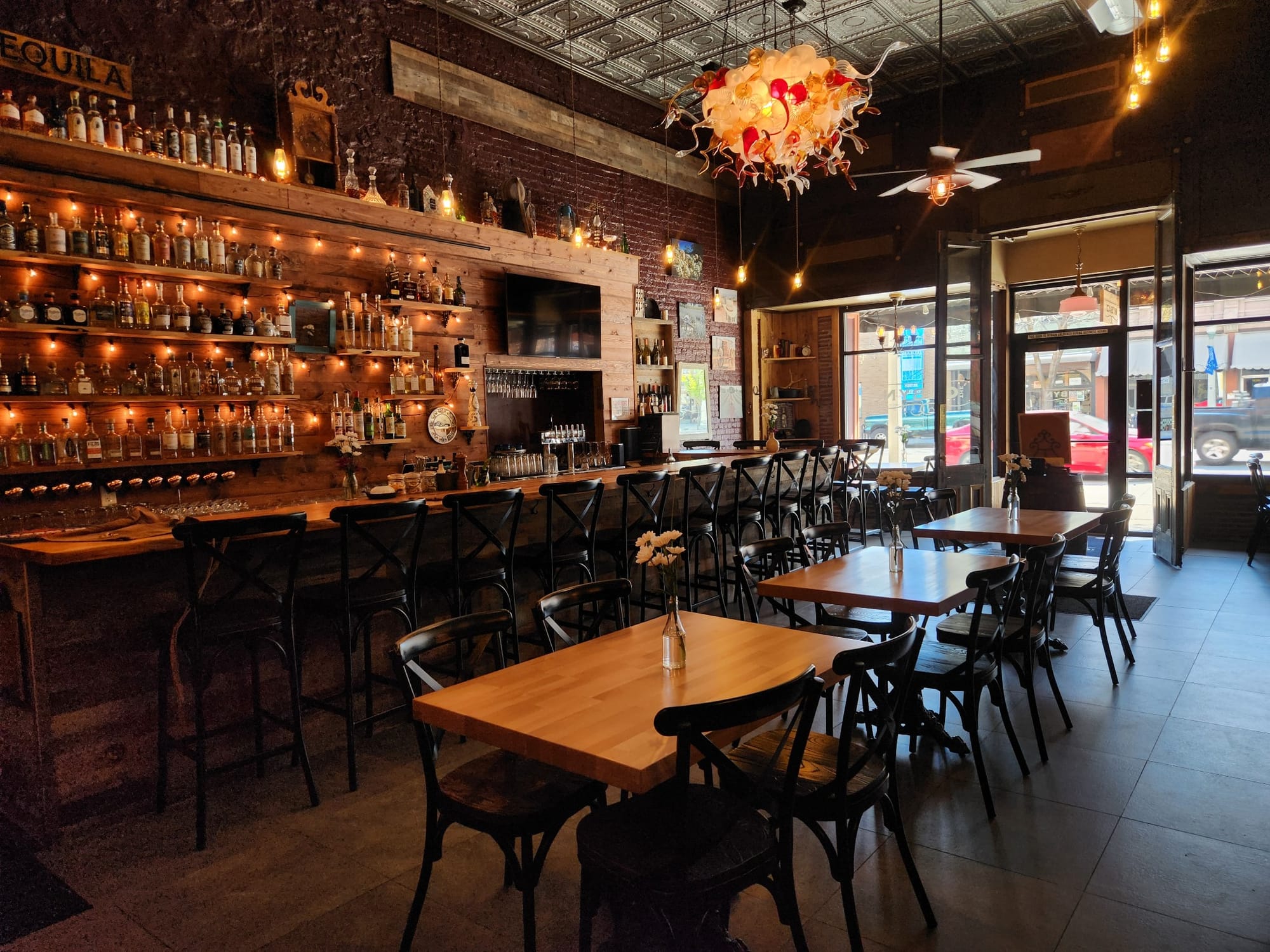
Where to Stay in Baker City
Baker City’s most iconic hotel is the Geiser Grand Hotel. Built in the 1880s, it’s been restored with modern amenities, including accessible rooms and an elevator. Staying here feels like stepping back into Oregon’s gold rush era.
For something more straightforward, the Best Western Sunridge Inn & Conference Center is a reliable option. It has spacious rooms, a pool with a lift, and easy highway access.
Quick Tips for Eastern Oregon
- Plan extra drive time. Distances between towns can be long, and there are spots along the way you may want to stop and take a photo. Also, cell service isn’t always reliable in these areas, so make sure you plan ahead.
- Pack layers. Days get hot and nights cool quickly in the high desert.
- Bring water and sun protection. Elevation and dry air can sneak up on you. Water and sun protection is your friend.
Plan Your Eastern Oregon Trip with Confidence
Eastern Oregon is all about big landscapes and small details — a woolen mill still making blankets, a railroad still running steam engines, a trail that winds past hills painted by time. With verified accessibility at hotels, attractions, and restaurants, you can take it all in with confidence.
Your adventure out east is waiting.
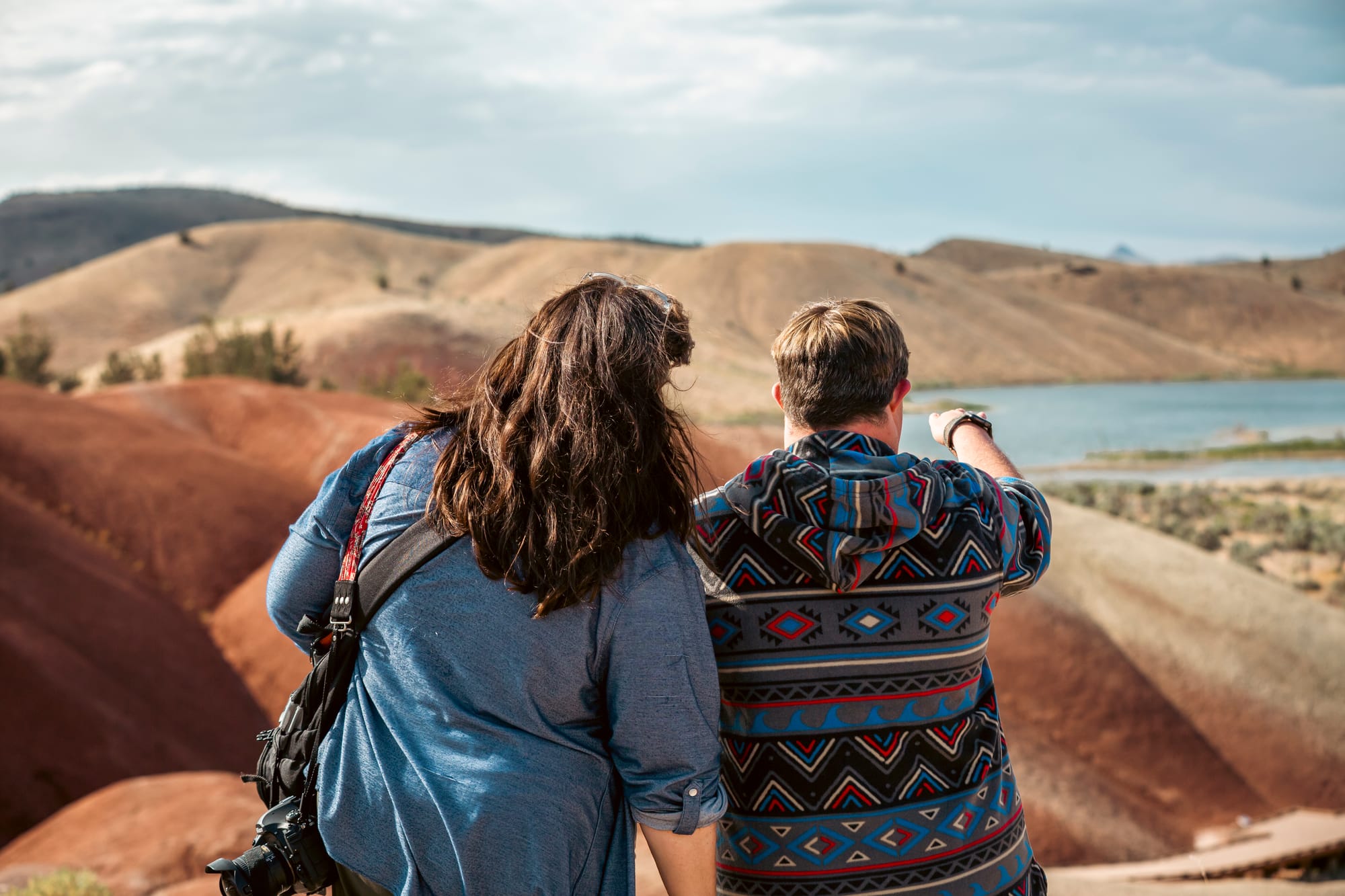
Plan With Accessibility, Enjoy With Peace of Mind
With verified accessibility information across Eastern Oregon
Start planning


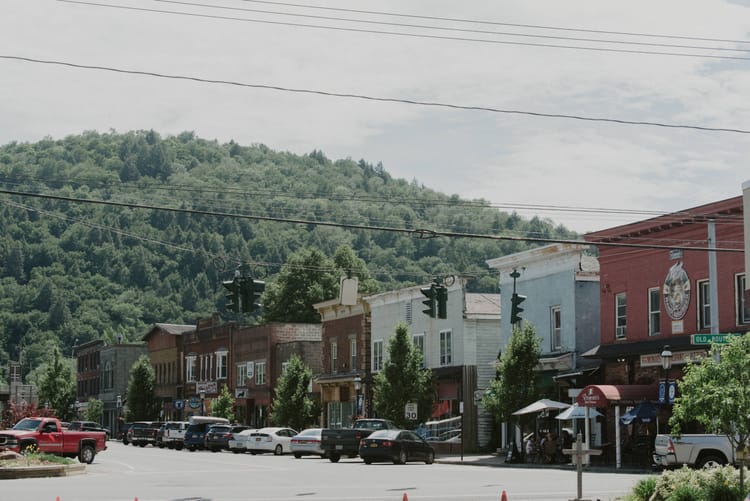

Comments ()